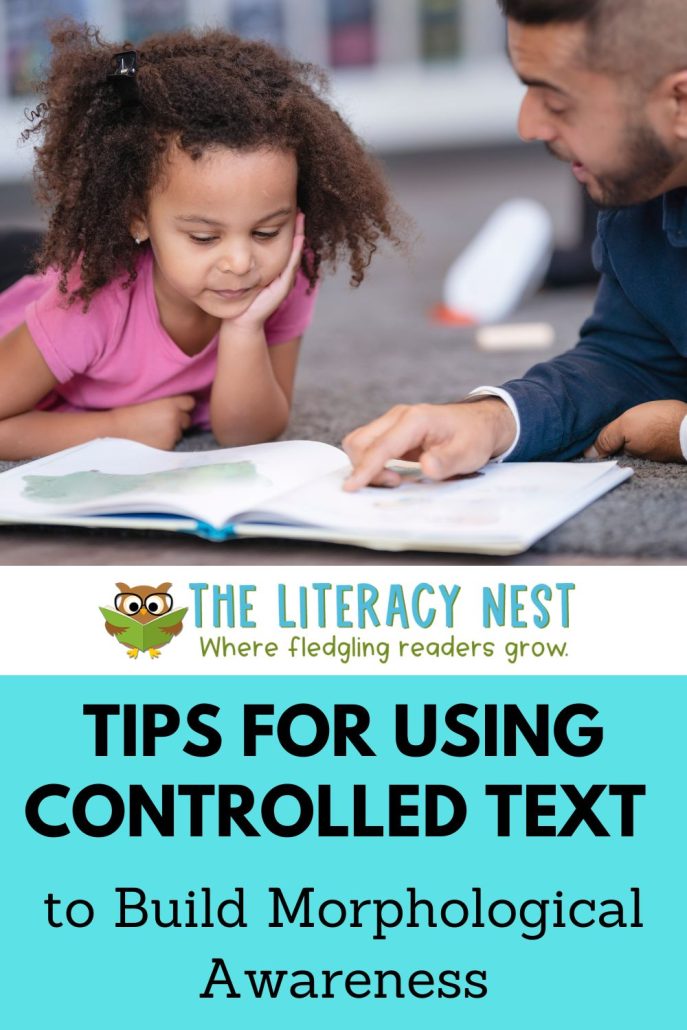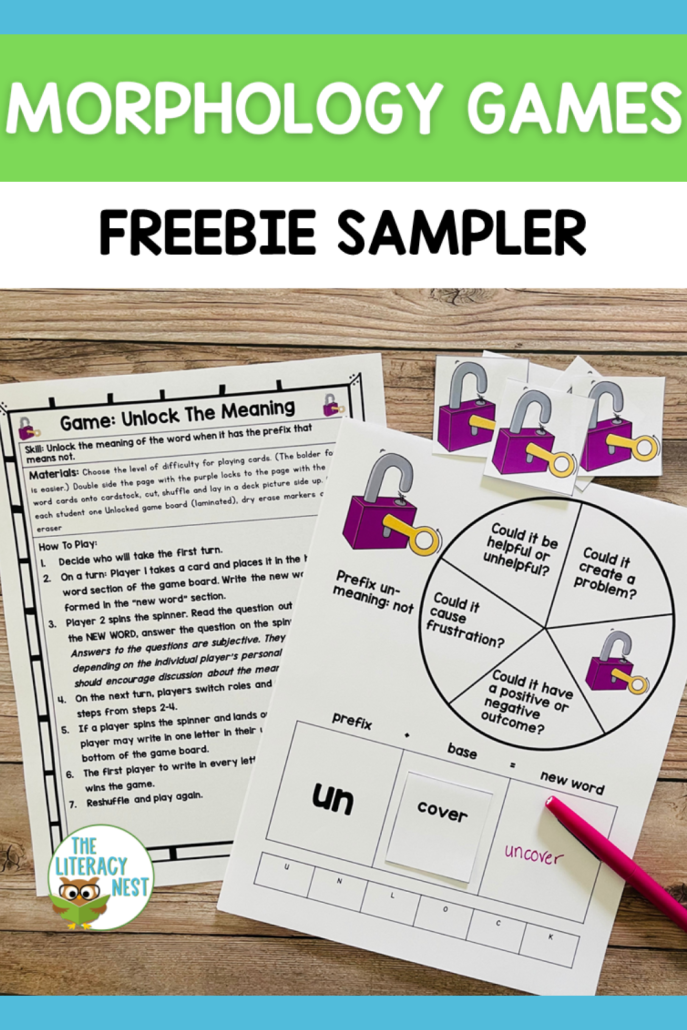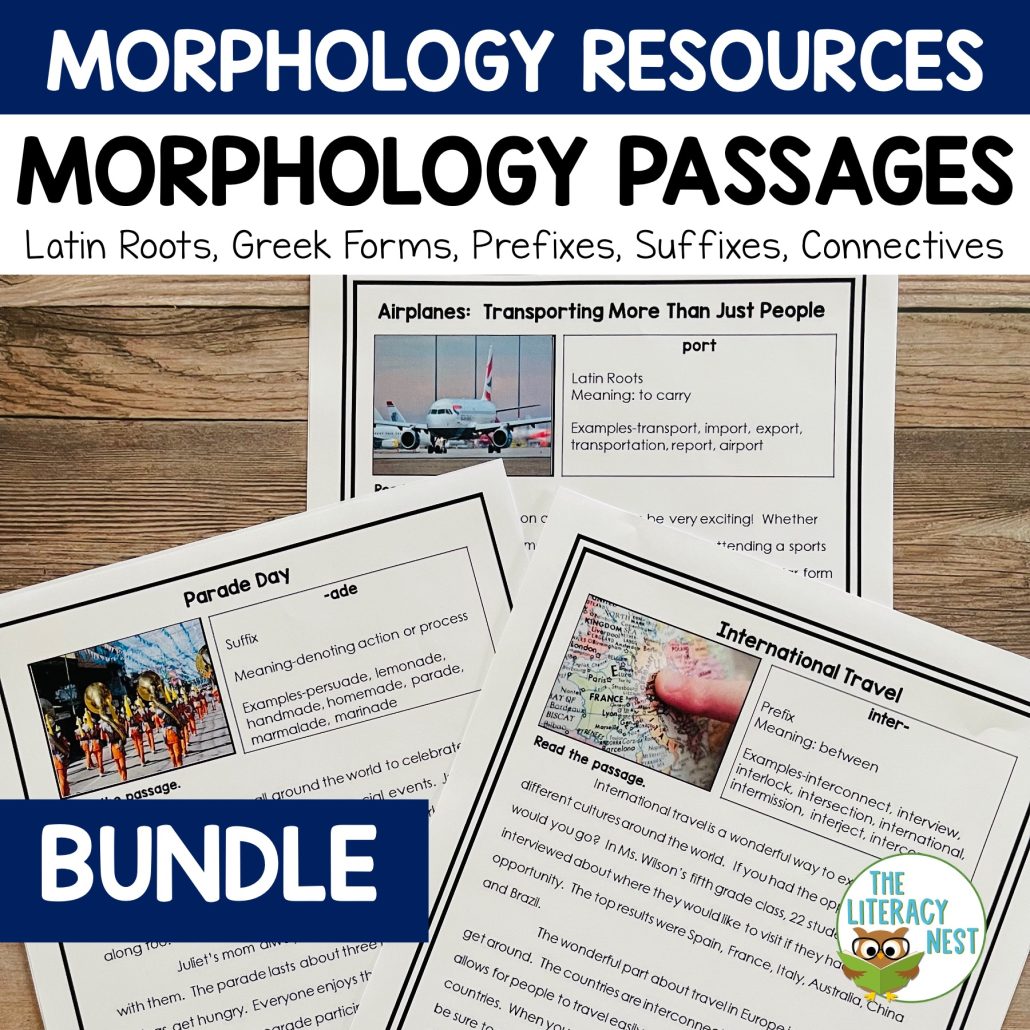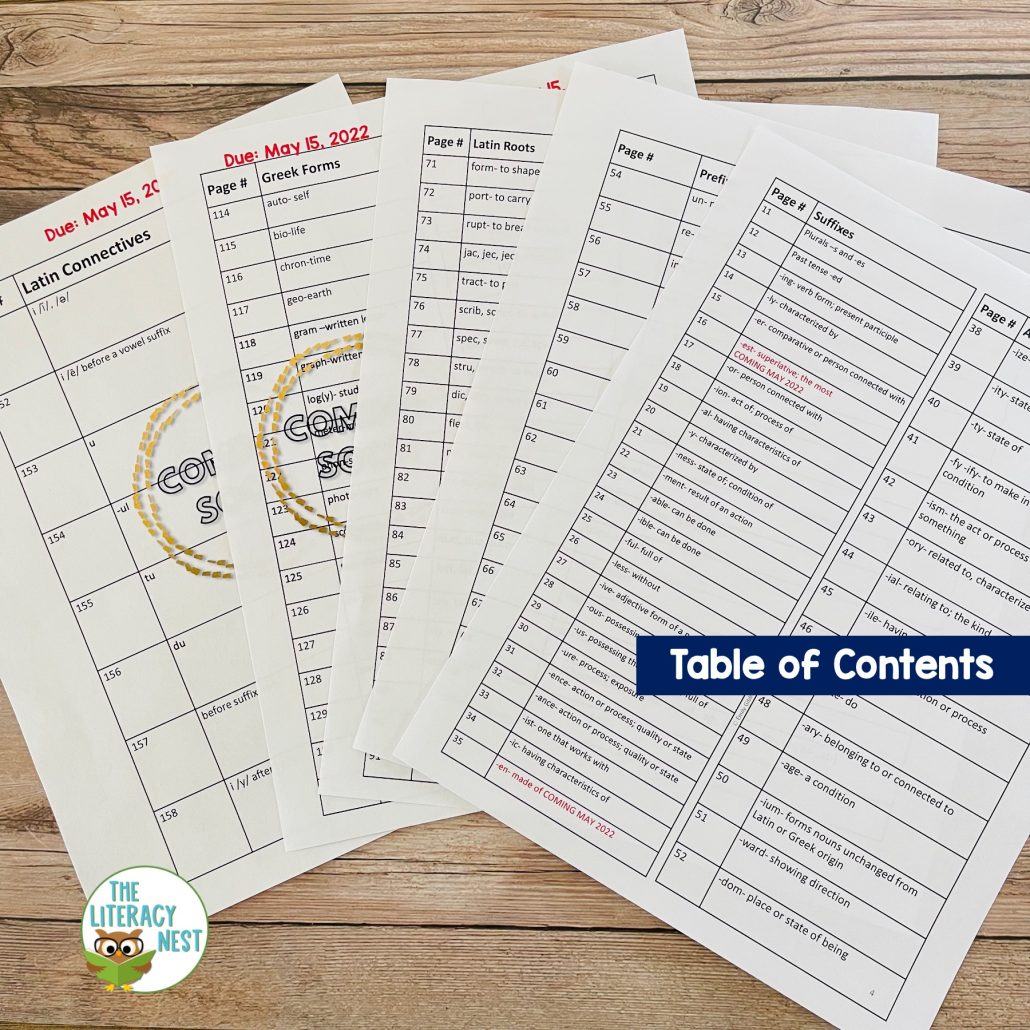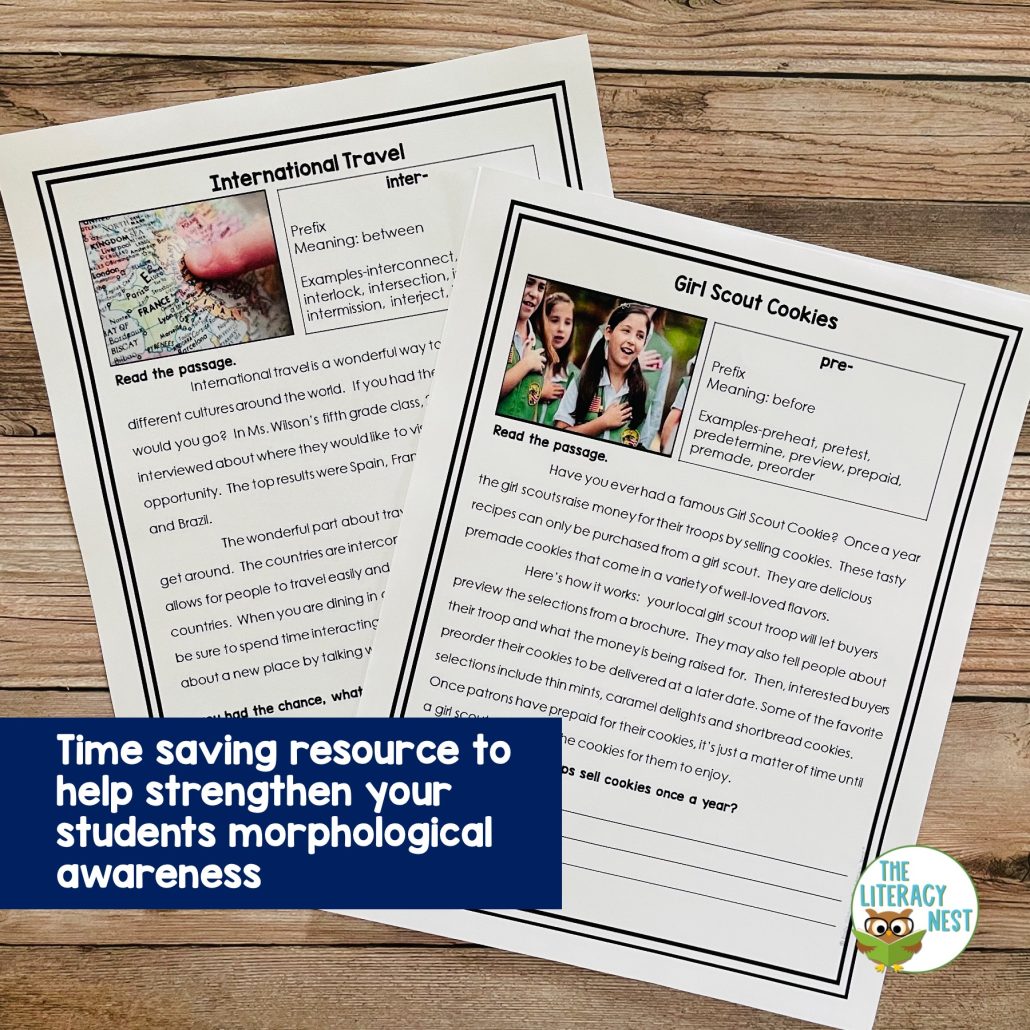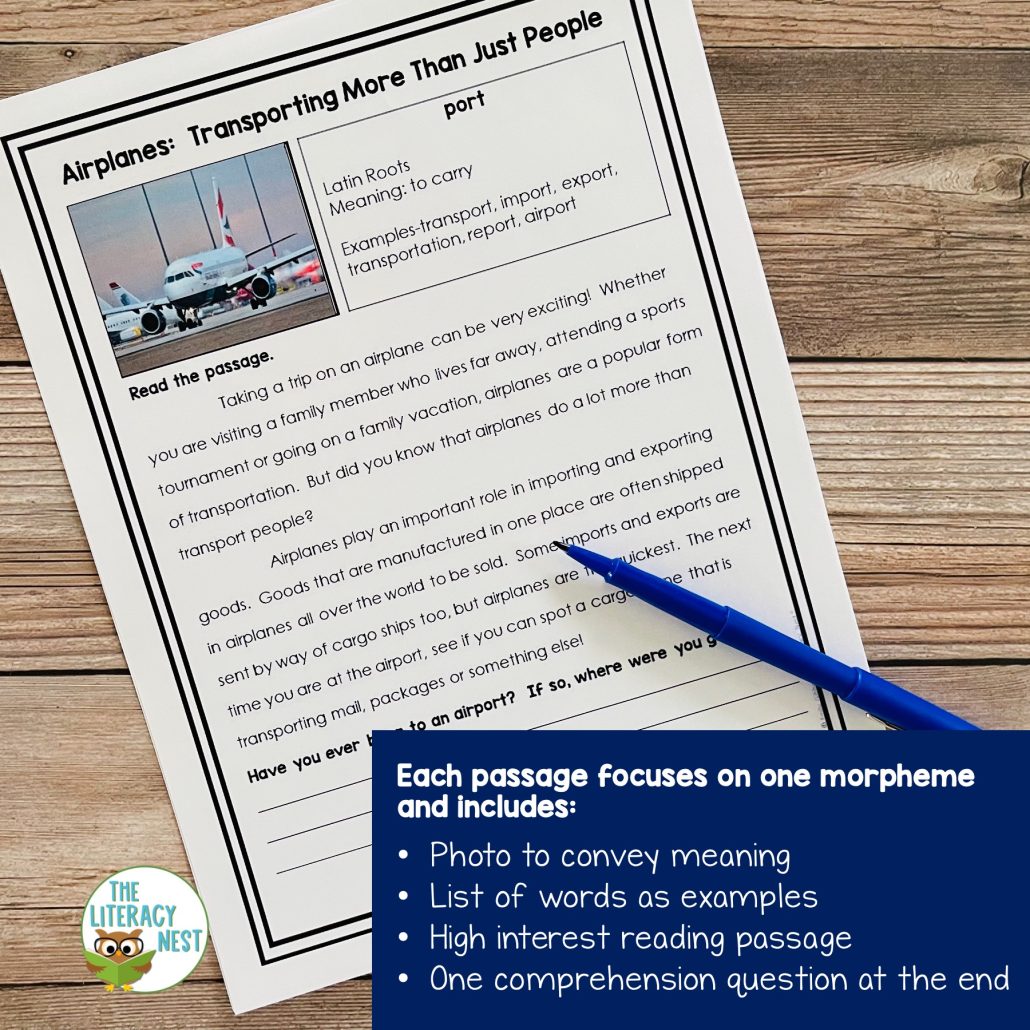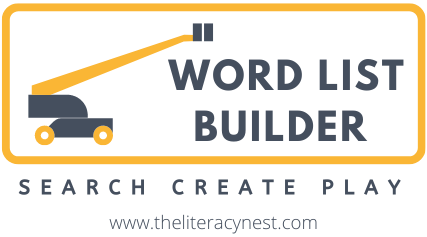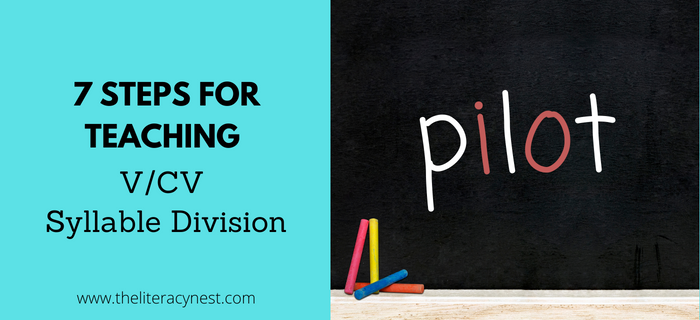Tips for Using Controlled Text to Build Morphological Awareness
It’s important to help our students build their morphological awareness, but how can we do this? By using controlled text!
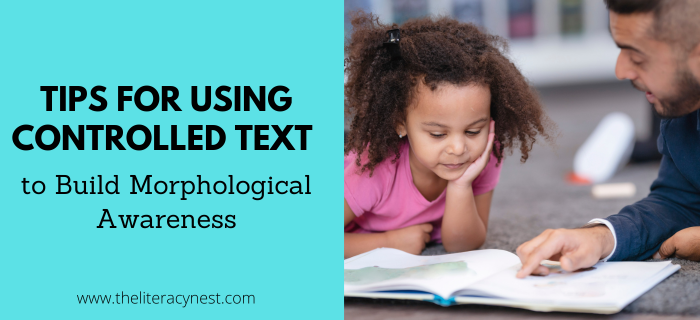
What is morphological awareness?
Morphological awareness is the ability to recognize the smallest units of meaning in words. These units, or morphemes, may be prefixes, suffixes, base words, or roots.
Looking for resources to help with teaching affixes? Read Top 6 Picture Books for Teaching Affixes!
English is not a purely phonetic language. It’s a morphophonemic language. This means that to fully understand English, it is important to be able to consider not only the sounds in the word but also the chunks of meaning. These morphemes play a role in meaning, usage, spelling, and pronunciation.
Help your students better understand the English language! Read Children’s Books About The History of The English Language!
What are the benefits of explicitly teaching morphology?
Morphology plays an important role in literacy. Morphology knowledge may significantly impact decoding a word phonetically. Units such as -tion and -ture don’t necessarily make the expected sounds. Understanding their usage in building words is integral to their accurate reading and spelling.
Learn more about the connection between language and literacy! Listen to season 3, episode 3 of the Together in Literacy podcast!
Morphology also has a huge impact on the development of vocabulary. A student with knowledge of the most frequent prefixes, suffixes, and roots can use that information to make accurate predictions about the meaning of new words.
This instruction also impacts reading comprehension. Direct and explicit instruction in morphology has a key role to play as part of a structured literacy lesson. It has been shown that not only does morphology instruction play a role in reading complex derived multisyllabic words, but there also appears to be a link between morphological awareness and instant word recognition. (Ardanouy et al, 2023).

Morphological awareness also has a key role to play in spelling. Knowledge of morphology is key to understanding the spelling of words such as jumped. The knowledge of the -ed suffix prevents the overgeneralization of sound patterns and spelling -ed as t.
Download our printable morphology instruction checklist!
Keep these principles in mind when planning your morphology instruction:
- Teach morphology in the context of rich, explicit vocabulary instruction.
- Teach students to use morphology as a cognitive process with explicit steps. These steps should be modeled and practiced through a gradual release of responsibility method.
- Teach the underlying morphological knowledge needed in two ways: explicitly and in context.
- Knowledge of prefixes and suffixes.
- Knowledge of roots,
- Knowledge of how words get transformed. Students need to learn that words may have changes in spelling and pronunciation as different derivations are formed. (Kieffer, 2007)
Want to save time in planning Morphology lessons? Watch this video for my top tips!
Using Controlled Text to Build Morphological Awareness
Using controlled text with a particular morpheme can be a powerful part of building morphological awareness. Controlled texts help teachers and tutors use a systematic approach to teaching morphemes.

- The predictable sequence, presentation, and types of practice can help students learn new material more efficiently.
- Children learn to read and recognize the words within the context of the reading passage or story.
- Repeated exposure to different words using the same morpheme contributes to mastery.
- Children have an opportunity to use their knowledge of morphemes to improve their use of semantic clues and context to learn different meanings.
Unlock the key to building morphological awareness with this sampler freebie of eight morphology games!
Morphology Practice
The morphology passages from The Literacy Nest shop include opportunities for lots of morphological practice. The morpheme boxes are perfect for engaging in morphological analysis. Students can locate the target morphemes or identify all the morphemes that make up each word. Students can use this knowledge to generate definitions, create related words, or generate sentences with the target words. Reading the words in context allows students to build a level of comfort with quickly identifying and reading words with these morphemic elements.
Get Morphology Activities Passages for Prefixes, Suffixes, Roots, and Greek Forms on The Literacy Nest Shop or TpT.
After using these reading passages, you can continue to build fluency and automaticity by gathering passages into a binder for reading practice, sending the stories home for additional practice, or adding extension activities.
Some high-value extension activities include:
- Generating new words using the targeted morpheme
- Creating word matrixes
- Using the Morphology Writing Prompts from The Literacy Nest. These writing prompts target an individual morpheme and use a graphic organizer. The writing prompts are written to require an understanding of the morpheme to answer.
Are you looking for a list of words to use in your morphology lessons? Word List Builder has got you covered!
Save time searching for -able and -ible words! Create customized and meaningful review, build your folder of words, create templates and games, and much more in Word List Builder.
